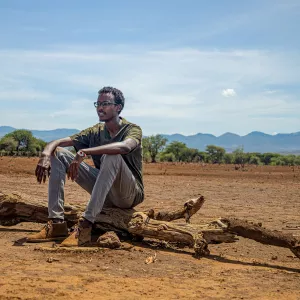Drylands under pressure: Science and solutions for global stability
Expert Voices by CGIAR Executive Managing Director, Ismahane Elouafi on Science.org Drylands are the backbone of global agriculture, supporting 44% of the world’s farming. Yet, they are under siege. Climate change, land degradation, and water scarcity are transforming these essential regions into barren landscapes, threatening the livelihoods of nearly three billion people. These lands, which already face some of the

Drylands under pressure: Science and solutions for global stability
Expert Voices by CGIAR Executive Managing Director, Ismahane Elouafi on Science.org
Drylands are the backbone of global agriculture, supporting 44% of the world’s farming. Yet, they are under siege. Climate change, land degradation, and water scarcity are transforming these essential regions into barren landscapes, threatening the livelihoods of nearly three billion people. These lands, which already face some of the harshest conditions on Earth, are warming faster than other parts of the planet. Their decline imperils food security, biodiversity, and stability across vast swaths of the globe.
The crisis is accelerating. Water scarcity could displace 700 million people by 2030. Land degradation continues to erode agricultural productivity, while habitats vital to countless species disappear. This is not just an environmental issue—it is a humanitarian and economic one. Addressing desertification is no longer optional. It requires urgent, coordinated action grounded in science and innovation to restore degraded lands and build resilience.
Drylands are paradoxical landscapes—dynamic but fragile ecosystems facing persistent water scarcity, unpredictable rainfall, and vulnerability to land degradation—but still supporting millions of livelihoods. They sustain nearly half of global agriculture, yet they are among the most vulnerable of Earth’s ecosystems. Every year, vast tracts of productive land are lost to land degradation. The cascading effects are far-reaching. Degraded soils lose their ability to store carbon, accelerating climate change. Essential ecosystem services such as water filtration and pollination collapse, further destabilizing these regions.
Read the full piece on science.org at the link below.
Photo by Anthony Ochieng/GLF. This commentary features the work of multiple CGIAR Centers and partners, including the newly launched Global Strategy for Resilient Drylands, led by ICARDA, ICRISAT and partners. This commentary was developed with support from Adam Hunt, CGIAR Senior Content Advisor

